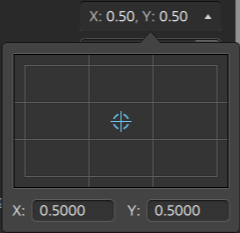Using the Timeline Inspector
In the Inspector  , select the Timeline tab to edit settings for your project timeline.
, select the Timeline tab to edit settings for your project timeline.
Click an empty area in the timeline below the last track, and the Timeline tab is displayed automatically if the Inspector is visible.
When you add the first video clip to a project, the timeline settings are automatically adjusted to match the media properties. For more information, see "Adding media and creating clips."
Summary
Type a value in the Name box to set the title of the project.
Video
Audio
|
Item |
Description |
|---|---|
|
Choose a sample rate from the drop-down list to indicate the number of samples per second used to store audio. Your project audio is resampled automatically. To use a custom sample rate, choose Custom from the drop-down list and type a sample rate in the edit box. |
|
|
Choose Stereo from the drop-down list to create a two-channel (stereo) project. Choose Multichannel and type a number in the Channel count box to create a multichannel project. |
|
|
Drag the fader to adjust the volume of the main output. Double-click the center of the thumb to reset the fader. You can double-click the numeric value to type a new value. When adjusting volume, remember to watch your audio meters. Because you are adding the volumes of all of the tracks together, it is easy to clip the audio output. Make sure that the meters never display the red Clip indication during playback. For more information, see "Monitoring audio levels." |
|
|
Click |
Channel Output
Click the speaker icon to turn a channel on  or off
or off  .
.
Click the Mono or Stereo button to indicate whether a channel is a mono channel or part of a stereo pair. Enabling Stereo will pair the channel with the next channel in the list.
If you want to set all of a clip's channels at once, click the Channel Tools button  and choose Set all to mono, Set all to stereo, or Reset.
and choose Set all to mono, Set all to stereo, or Reset.
Type a name in the edit box to identify the channel. For example, you might type Lav1 to identify audio from a lavalier microphone.
Video Effects
When the timeline has effects applied to it, you can use the Video Effects controls to control the settings for each effect. For more information, see "Adding effects to the timeline."
Click the Overlay button  to show or hide a plug-in's interactive overlay controls in the video preview (when available).
to show or hide a plug-in's interactive overlay controls in the video preview (when available).
Click the Mute button  to bypass a plug-in without removing it from the chain.
to bypass a plug-in without removing it from the chain.
Click the Delete button  to remove a plug-in from the chain.
to remove a plug-in from the chain.
Drag a plug-in's heading to change its position in the plug-in chain.
Click the toggle arrow to show or hide each plug-in's controls.
When you select a position parameter in the Inspector, a control point ( ) is displayed in the video preview. You can adjust the parameter's position by dragging the control point in the video preview or the Inspector:
) is displayed in the video preview. You can adjust the parameter's position by dragging the control point in the video preview or the Inspector:

|

|
 ), ensure you're using the same
), ensure you're using the same  to mute/unmute your project's audio output.
to mute/unmute your project's audio output.